Average Birding

Migfest 2021 - Part Two
We made it to Spurn for Migfest 2021, and day one was spectacular. How will day two go? And will there be much of a day three?
A cooler start
The wind's changed overnight from a warming Southwesterly to a cooler Northerly. We're shocked to discover that yesterday's two layers and shorts outfits are now totally insufficient; trousers, coats and hats are now required.
We're off on a gentler walk this morning around the triangle of Easington Road, the sea wall and the road back from the Discovery centre. This is billed as a migration walk, but much like yesterday's exploration of Spurn Point, it's not the right day for it; in the way of migrants we hear and see very little.
We do pick up a Whimbrel when we turn left to walk alongside the estuary. There's some nice Shelduck here and there as well. One of our experts attempts an intrepid trip down into a reedy area and returns with a Common Whitethroat - a migrant! At last.
Our luck improves further when we flush a Short-eared Owl from the vegetation between the sea wall and the rising tide. It gives us a quick show, but is really only interested in hiding slightly further away from us. We note where it lands - we'll be near there soon.

The landing area, as we approach, appears to be made entirely of Curlews . Their camouflage, in this somewhat autumnal light, has made them invisible until we were opposite them. The Short-eared Owl's is even better - we still don't see it until it decides, once again, that a big group of birders is not something it wants to be anywhere near. It flies back up the estuary, sensibly. To mark its passage, a Water Rail sharms somewhere behind us, in the damp looking area between us and the discovery centre.
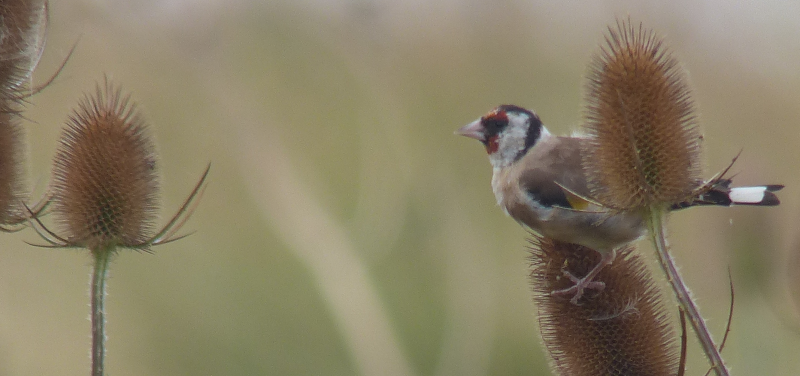
We reach the road and turn left towards the discovery centre. There's a rough patch here where Common Rosefinch has been spotted, but for us it is again somewhat dead. A joyful little flock of Goldfinches feeding on teasels and another consolatory Common Whitethroat is all we get.
A brief investigation is made into the scrape hide at the centre - there's one excellent Common Snipe poking about, but not a lot else. No sign of that Water Rail, sadly. It's a short walk from here back to the campsite, where we pick up a snack and a hot drink before deciding that despite the cold, we're going to choose birding over talks again.
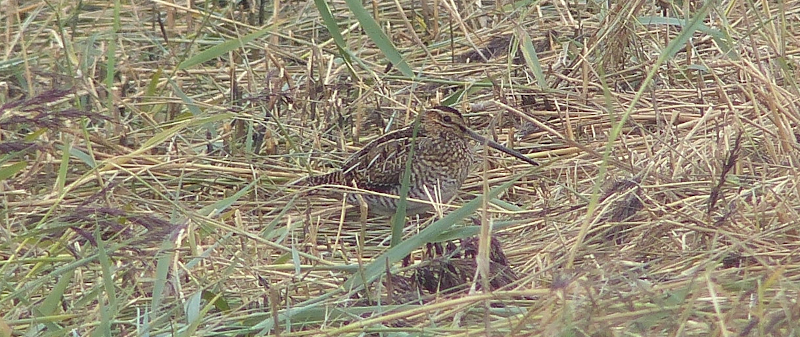
Where shall we go? Well, we hear positive noises about Curlew Sandpipers up at Kilnsea Wetlands, so we'll try there.
Kilnsea Wetlands
This is much as it was yesterday - loads of waders and gulls. We scour all of the edges for suitable Curlew Sandpiper and find a few candidates, but we struggle to convince ourselves - the birds are just too far away. We do manage to pick out one or two Little Stint on some of the nearer islands though.
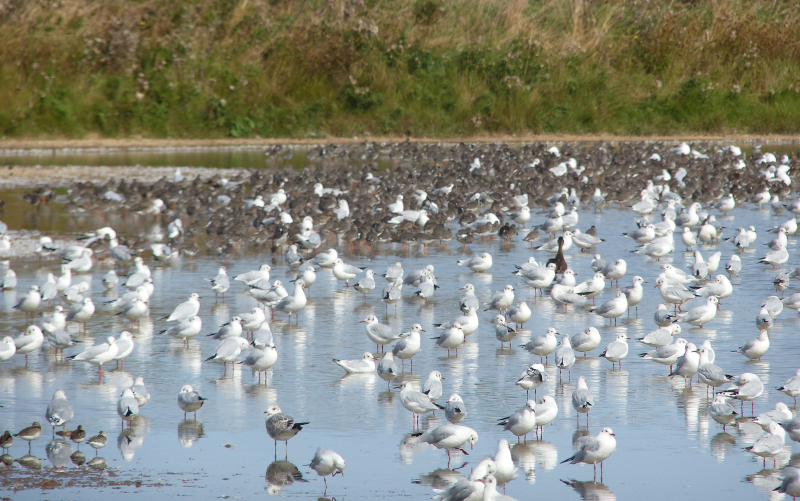
We have a much easier time of it in the hide - it's full of people, and one is explaining exactly which of the Dunlins in front of us are actually Curlew Sandpiper; it's a bit bigger, has a clearer eye-stripe, and, as a Peregrine Falcon bombs through, two of them demonstrate that when they stop slouching, they're noticeable leggier. Useful knowledge.
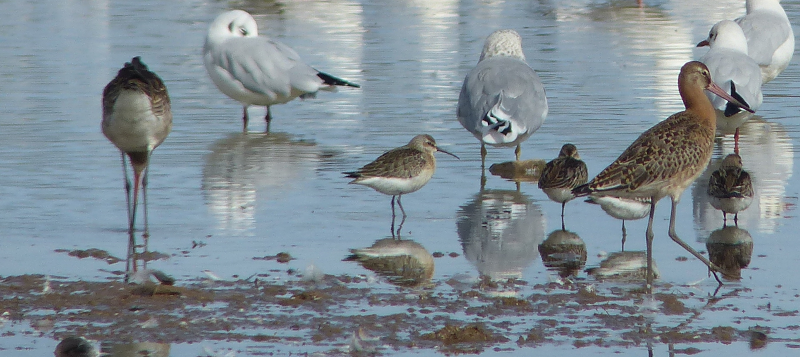
Outside the hide, a man with an impenetrable accent wants to tell us something. We eventually twig that he's trying to get us on to a Little Owl over by the farm buildings at the opposite side of the field. Lovely.
We reach the end of the wetlands and wonder what to do with the rest of the day. There's a path on the festival map that we're yet to explore that would take us around to Sammy's point and back along the river. We give that a go, and it does a great job of filling up the afternoon, without necessarily adding anything of note to the birding experience. It does, handily, deliver us to the pub in time to enjoy a pint or three to celebrate the official closure of the festival.
Monday morning
We noted with alarm that almost everyone upped sticks and left last night. Are we not allowed to stay into Monday? We check and find that it's not explicitly disallowed. A few other campsite dwellers do hang about and that gives us enough confidence to do the same, which is excellent, because we fancy another quick explore out towards the point to try and find the subjects of Saturday's secret bird pact.
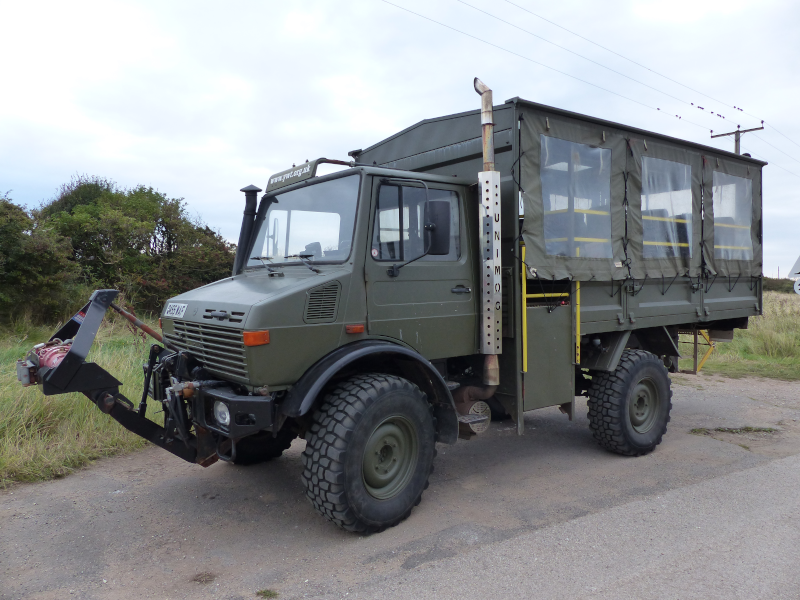
We pack up the tent into the car, then drive it down to the YWT visitor centre and park. With the car safely stowed we walk out towards the point, past a sleeping UNIMOG.
This time, we're not pursued by thousands of Meadow Pipits; the first birds we come across area a mixed bag of Reed Buntings and Dunnocks as we climb off the beach. A lone Pipit peeps at us from some giant rocky detritus. As we reach chalk bank, a showy Kestrel makes an appearance.

We cannot find the little gap in the bank from Saturday. Have we gone past it without noticing? We guess so. We make a few experimental forays up the bank up what appear to be reasonable well worn paths for a peek over the top, and eventually find a place where we can spy on the subject of the secret bird pact without us disturbing them.
There are altogether too many birds here to count - easily thousands of Knot and Dunlin, and hundreds of Ringed and Grey Plover. Some are still showing remnants of summer plumage. A shame it's such a grey day!
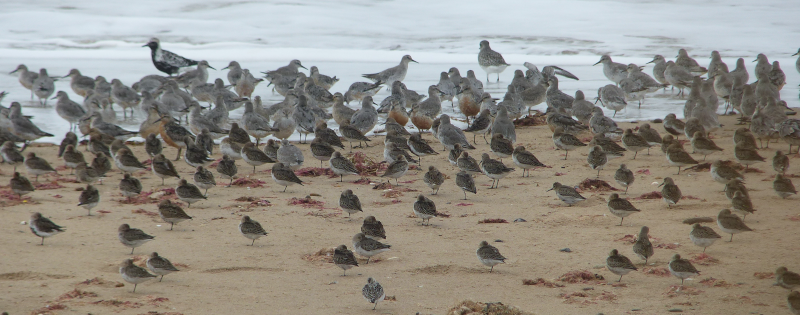
Mission accomplished, we return to the car. A trip to Fairburn Ings (for Spoonbill) and another short trip out to Attenborough (for a surprise Pectoral Sandpiper) to neatly round off a terrific weekend.
